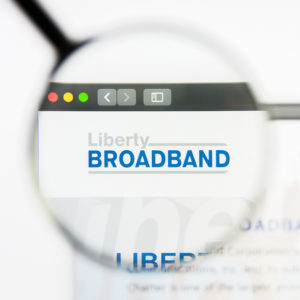Government regulators and the telecom industry agree that broadband maps showing who has internet access and who has high-speed internet are inaccurate. Members of Congress complain that the maps are “bogus.” Even the Federal Communications Commission admits they’re deeply flawed, which is why Chairman Ajit Pai said the commission will vote to change them in August.
Telecom lobbying group US Telecom launched its own broadband map initiative in March, and Senators Amy Klobuchar (D-Minn.), Gary Peters (D-Mich.) and John Thune (R-S.D.) just introduced the Broadband Deployment Accuracy and Technological Availability (Broadband DATA) Act, to speed the development of a new national broadband map.
But the FCC also just rolled out another round of funding to provide broadband to underserved rural areas totaling more than $166 million, based on the old, inaccurate broadband maps.
A team of researchers in Pennsylvania doesn’t understand why the FCC and telecom companies won’t just use their new nationwide broadband map, which they say is a far more accurate than anyone else’s, so that taxpayer dollars are used effectively.
Throughout the Obama and Trump administrations, the FCC has thrown billions of dollars at telecommunications companies to incentivize them to provide internet service to rural areas. (Rural areas are higher-cost than urban areas because of lower population density and difficult typography.) According to the FCC, this has helped to narrow the digital divide.
But according to the Pennsylvania team’s research, led by Penn State’s Palmer Chair of Telecommunications Sascha Meinrath, the FCC exaggerates the number of people who don’t have access to high-speed internet.
In their report released June 3, the team describes how they measured broadband speeds in every Pennsylvania county and created a methodology that could be used in any state. By partnering with other researchers in other states, they successfully created a nationwide broadband map.
“Over 800,000 Pennsylvania residents do not have access to broadband connectivity, according to the FCC,” the team says in the report. “However, recent research has documented that these official estimates are downplaying the true state of the digital divide because they rely on self-reported data by Internet Service Providers (ISPs).
According to the report, the research team collected “more than 11 million speed tests from across Pennsylvania in 2018 and found that median speeds across most areas of the state did not meet the FCC’s criteria to qualify as a broadband connection. At the county level, the 2018 data showed that there were 0 (zero) counties in Pennsylvania where at least 50 percent of the populace received ‘broadband’ connectivity, as defined by the FCC.”
In other words, the FCC has wasted billions through the Universal Service Fund (USF) and Connect America Fund trying to address rural broadband without actually knowing who needs service.
Meinrath told InsideSources that the team delivered packages to each Pennsylvania representative and senator in the commonwealth’s House and Senate with maps and data on their individual districts’ broadband connectivity.
“This is one of those great areas where Republicans and Democrats agree,” Meinrath said. “Many say this is the top issue they hear from the constituency, at the state level. I think there’s real opportunity for meaningful intervention.”
Meinrath also said one reason why the FCC won’t pay attention to his team’s map is because no one wants to admit fault for the old, bad maps. He’s met with the FCC many times over the last decade to discuss rural broadband issues.
“These maps have become increasingly hyperbolic, especially for rural America,” Meinrath said. “For rural America, our broadband maps are becoming less accurate. Because of that, there’s a reluctance to hit the reset button because it will show a tremendous regression in broadband availability across the United States, and no one wants to be part of that. They’d much rather increase hyperbole than accuracy.”
To Meinrath, it’s “fascinating” that federal lawmakers and regulators and national media gab about trying to improve broadband maps when Meinrath’s team already made one — with an accompanying 100-page report explaining the findings.
“We don’t have to talk about a future endeavor about maps,” he said. “We can be further supporting this kind of work. There’s no reason not to build on this momentum and these platforms. They’re already live. I would welcome the opportunity to talk more with the FCC. If someone’s willing to take this seriously and move the ball forward, I’m in.”
Meanwhile at the state level, governors and local lawmakers want to use Meinrath’s team’s findings to address the digital divide themselves.
“We know that topography, infrastructure access, population density and even consumer ability to pay all contribute to the current situation,” Pennsylvania State Sen. Gene Yaw (R) said at a June 3 press conference for Meinrath’s map and report. “However, the Penn State-led team of researchers identified examples where unique partnerships, cooperative initiatives, and support from federal, state and local governments, private businesses, and nonprofits are working to bring universal, high-quality broadband to all Pennsylvanians.”

